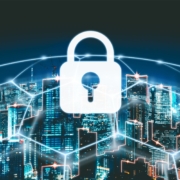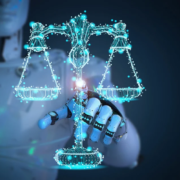AI: A Shield Against Cybercrime
/in Article, Cyber security/by Information AnalystAI: A Shield Against Cybercrime
Insights

AI: A Shield Against Cybercrime
August 29, 2024
By Saya Ahmed
As we have grown to rely more and more on dependent on digital methods of conducting business, and information is the new currency, cybercrime has become a pervasive threat. From data breaches to ransomware attacks, malicious actors are constantly evolving their tactics to exploit vulnerabilities. To combat this growing challenge, artificial intelligence (AI) is emerging as a powerful tool.
One of the most significant ways AI can help prevent cybercrime is through advanced threat detection and prevention. Traditional security systems often struggle to keep pace with the rapid evolution of cyber threats. AI-powered algorithms, however, can analyze vast amounts of data in real-time, identifying patterns and anomalies that may indicate a potential attack. By leveraging machine learning, AI can learn from past attacks, adapting to new threats and proactively blocking them before they can cause harm.
In 2020, a large multinational bank (that shall remain anonymous) was under constant attack from a sophisticated cybercrime group. Despite their best efforts, the bank’s traditional security systems were overwhelmed by the volume and complexity of the attacks.
The bank then deployed an AI-powered security solution that used machine learning algorithms to analyze vast amounts of network data. The AI system quickly identified patterns in the attackers’ behavior that were not discernible to human analysts. It detected unusual traffic flows, anomalous login attempts, and suspicious data exfiltration attempts.
Based on the AI’s insights, the bank’s security team was able to isolate the infected systems and prevent the attackers from gaining access to sensitive customer data. The AI system’s early detection and rapid response averted a potentially catastrophic data breach that could have had severe financial and reputational consequences for the bank.
Another area where AI can make a significant impact is in identifying and mitigating phishing attacks. Phishing emails, which often contain malicious links or attachments, remain a common tactic used by cybercriminals. AI-powered systems can analyze the content, sender, and other characteristics of emails, flagging suspicious messages for further investigation. Additionally, AI can help detect and prevent social engineering attacks, where attackers manipulate individuals to divulge sensitive information.
Moreover, AI can play a crucial role in securing the internet of things (IoT) devices. As the number of IoT devices connected to the internet continues to grow, so does the risk of cyberattacks targeting these devices. AI can be used to monitor IoT networks for unusual activity, identifying potential vulnerabilities and taking appropriate action to protect them.
However, AI is not a silver bullet. While it can significantly enhance cybersecurity efforts, it is not infallible. Human oversight and intervention remain essential to ensure that AI systems are effective and are not being exploited by malicious actors. Additionally, as AI technology continues to evolve, it is crucial to address ethical concerns and ensure that it is used responsibly.
In conclusion, AI offers a promising solution to the growing threat of cybercrime. By enabling advanced threat detection, mitigating phishing attacks, and securing IoT devices, AI can help organizations protect their valuable data and systems. As AI technology continues to mature, it is likely to play an even more critical role in safeguarding the digital world.








 VideoFlow via Adobe Stock
VideoFlow via Adobe Stock









